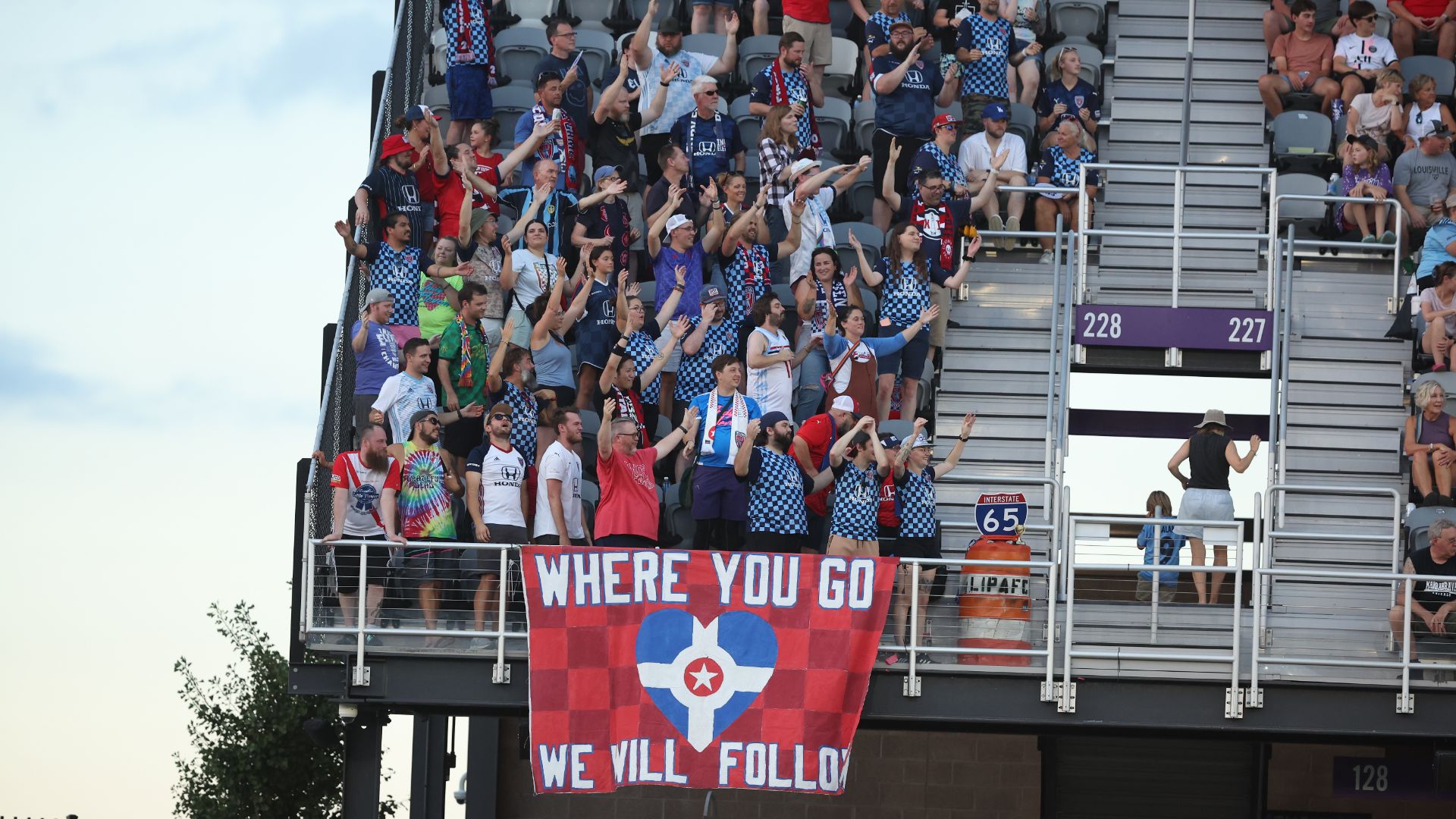According to legend, the 1865 USL matchup between Louisville City FC and Indy Eleven was one of the most dramatic in history. The Eleven squad, recently returning from the Civil War, had their trip down to Kentucky delayed. They made it just in time for kickoff, but had to play all 90 minutes in their infantry uniforms in an odd twist to one of soccer’s longest-running derbies.
Just one problem, though: none of that is true.
There was no Louisville City FC in 1865. Instead, that fib is part of a well-constructed, invented and humorous web of lies that have come to define one of US soccer’s fiercest and funniest rivalries, a made-up clash between two USL powers that has emerged as a marquee matchup in a growing league. It’s referred to as the Louisville-Indianapolis Proximity Association Football Contest (or LIPAFC, for short.)
First officially played in 2015 in the third round of the US Open Cup, the clash between two cities separated by 115 miles of I-65 has evolved into the ultimate running joke, a source of good-natured banter that has developed into a fierce rivalry on the pitch. “Both fan bases have a good time. They'll come up with a story or they're making something up… but the reality is whatever team ends up winning the games, it means something. It becomes very serious,” Louisville coach Danny Cruz told GOAL.
Including that original match, the two teams have met 22 times across all competitions. Louisville holds the upper hand in the series, winning nearly half of the games. Indy has won just one of the last five. Still, that has done little to discourage the two clubs’ supporters groups who have helped form the intensity around the rivalry.
“When the schedule comes out, it is the first two matches that anybody in [our supporter’s group] looks for. We circle that on the calendar,” David Ziemba, president of Indy Eleven’s Brickyard Battalion Supporters group, told GOAL.
But this is as much supporters’ tradition as a soccer match, a parody of the kind of derbies that have consumed the European game for years. The fixture has its own official website, describing the annual meeting as “the single most important sporting and cultural event in human history,” and “the cause for humanity’s ascension to control this planet.”
Fans have fully embraced it. Since its inaugural matchup, a social media driven network of falsehoods explaining the supposed origin of the fixture has spread. Fans have claimed, among other things, that a reference to the fixture was found in the ruins of Pompeii, that a Civil War veteran used a prosthetic leg to beat up a referee in 1868, and that a 1926 contest between the two sides was decided by a 36-35 penalty shootout win. “It's another way of us trying to explain to the rest of the world who may just be turning on to it that we take this super seriously,” Ziemba said.
Every year, the winner of the two-game season series is awarded the LIPAFC Barrel Trophy. It’s a janky thing, a I-65 sign jutting awkwardly out of a traffic barrel with a broken plastic trophy taped awkwardly on the side. The trophy has a history of its own, with supporter groups from the two clubs linking up on social media to design the amusing heirloom (although the rivalry site claims that the original trophy was made from pieces of the Trojan Horse.)
“We’ve had a good healthy rivalry ever since they joined the USL,” Michael “Scouse” Bromilow from Louisville City’s Scouse’s House supporters group told GOAL. “We know it’s a game we can get to, and it’s always a good laugh.”
Other traditions have developed around the game. Indy were quick to make fun of Louisville in 2022, paying for a flyover before a meeting between the two sides with a trailing banner that read “Louisville City FC loves Nickelback.”
They doubled down on the joke in the return fixture, replacing the photos of Louisville’s starting XI with pictures of the band when lineups were announced prior to kickoff. Still, those involved are quick to emphasize the seriousness of the fixture on the pitch.
“We have a lot of respect, we've had a lot of big games against them,” Cruz said. “But ultimately, at the end of the day, we want to make sure that in these games, we're representing our fans, we're representing our community, we know how much it means.”
The same goes for Sean McAuley. The newly-minted Indy Eleven coach, heading into his first ever iteration of the derby, understands the importance it has to the fans.
“I have to make the players understand that we’ve got supporters spending their hard earned money, in travelling to a game, buying tickets,” McAuley told GOAL. “They want to see us wear the jersey with a sense of working exactly how they would if they had the chance to wear the jersey.”
The rivalry hasn’t been short of its big moments. Cruz, a veteran of the fixture, recalls in delight the 2019 derby in which Louisville scored an equalising goal with the final kick of the game, and won in extra time to clinch the Eastern Conference Championship. But he can also taste the bitterness of having to listen to Indy celebrate a 1-1 draw after his team failed to capitalize on a litany of chances in a home matchup last year.
In April, the contest reached a wider audience for the first time - Louisville battering Indy, 5-3, in the first USL game ever to be broadcast on national TV. 11,000 fans showed up for that contest, and there might be even more when the two teams meet again in September.
Indy will take 150 fans to Louisville for the game, Ziemba said. Louisville, top of the eastern conference, will surely be the favorites. Still, in this most absurd, most competitive and funniest of derbies, anything can happen.
.png?auto=webp&format=pjpg&width=3840&quality=60)